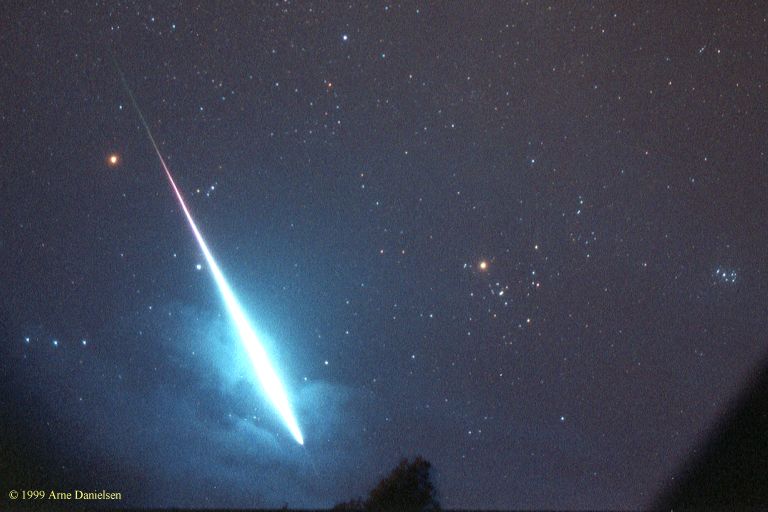In my time watching the skies, I’ve seen quite a few meteors, fireballs, and bolides. The truly notable ones are few and far between, but last Saturday, I caught one that was among the most interesting I’ve seen. It was a slow moving, bright green one with a nice smoke trail that was easily as bright as Venus from where I saw it in the suburbs of St. Louis. I tweeted about it briefly but didn’t think much more about it until I got a response from another person that saw it along with a link to a collection of observations. As nice as the observation was for me, it was nothing compared to the view some others got.
Heading over to the American Meteor Society page for a meteor around this time, it looks like a meteor matching the one I saw generated a pretty good number of reports from across the country. Several have reactions similar to my initial one: This must be a firework. Many reports confirm the smoke trail and fragmentation as well. But the reports that are really fantastic are the ones from Canada.
At the Lunar Meteorite Hunters blog, several reports have been collected. Several of these reports from various locations in Ontario report the meteor being as bright as a full moon and lighting up the entire sky! One even notes that they could hear a fizzling noise, a rare phenomenon thought to occur when the passage through the atmosphere creates an ionized path that interacts with the Earth’s magnetic field creating radio waves that could induce physical vibrations in the air around the observer. Another comment reports a sonic boom around the same time (although sonic booms would occur well after the meteor was visible due to the sluggish nature of sound waves, much like the delay between lightning and thunder).
It doesn’t look like NASA’s All Sky Fireball Network caught this fireball, but an amateur observatory equipped with an all sky camera for detecting fireballs did catch the event.
The green color for such meteors is uncommon but not unprecedented. The presence of magnesium ions is responsible for this color. Interestingly, another famous meteor, the Peekskill meteor, also had a green color and rivaled the full moon in brightness. This meteor became famous because it was independently captured in at least sixteen videos (here’s one showing the green tint) as well as for surviving intact to the ground and damaging a car.
Meteors of this intensity are quite rare but bright fireballs like this seem to peak around the vernal equinox. In the weeks surrounding that day, the rate of such events increases around 10-30%.


Darn, I live in Ontario and missed it – must have been sleeping.
So the first picture is a stock photo but on the link “did catch the event” is the real event. The real event picture was more dramatic. It wasn’t the Lacrosse 2 de-orbiting over frendlies? Canadians and us are partners; especially in military space stuff.
Ontario is so hugh! I think I know it because I was a Detroiter , like hockey and used to hang out there but when I see it on the globe I’m amazed it’s almost as big Europe, it boarders what 4-5 states and goes to the north pole?
Canada, the US, and China are all about the same size, and each is approximately the size of Europe.
In what parts of the US could this be seen?
I saw this in central Indiana as well. I was fortunate to have caught it by virtue of sitting by an open window while watching a movie with my wife. I saw it burst in the corner of my eye and I could also swear I heard it making a “fizzing” sound. Not the first time I’ve seen a bolide, and not the most impressive, but it was still exciting!
Also, I didn’t realize that bolides were visible over such large distances. I thought they were much more local events. When I first saw this article I was thinking maybe it was another bolide from the same debris cloud that fell closer to where I live. Can anyone confirm/deny whether single events are visible over entire continents?